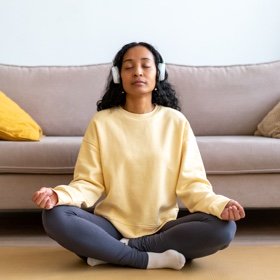
Fabiana's personal journey of healing from Frozen Shoulder and her Anti-inflammatory diet that helped the proceess.
 Have you heard of adhesive capsulitis? More commonly known as frozen shoulder, it is an inflammatory condition that causes fibrosis or stiffening of the capsule that covers the shoulder joint. It’s a very debilitating condition, causing significant pain and severely reducing shoulder mobility. Recovery can be very slow, taking up to two or three years.
Have you heard of adhesive capsulitis? More commonly known as frozen shoulder, it is an inflammatory condition that causes fibrosis or stiffening of the capsule that covers the shoulder joint. It’s a very debilitating condition, causing significant pain and severely reducing shoulder mobility. Recovery can be very slow, taking up to two or three years.
The onset is often a slow but progressive pain over several weeks, with more intensity at night or when the shoulder is moved to the end of its range of motion. Ordinary tasks such as reaching for a bra strap or grooming your hair can become increasingly difficult and painful.
There are three stages of frozen shoulder:
1. Painful Stage - A period of generalised aching pain and stiffness that lasts between three and eight months.
2. Adhesive Stage: Characterised by less pain but increased stiffness with very limited motion. This stage can last between four to six months.
3. Recovery Stage: Also referred to as the thawing or regressive stage. Pain progressively decreases, and although there is still limited range of movement, it gradually improves within twelve to twenty-four months.
Diagnosis is typically made through physical examination and ultrasound.
What causes frozen shoulder and are there any risk factors to be watch out for?
Firstly, there are two types of the condition:
Primary Adhesive Capsulitis: This is idiopathic, meaning the cause is unkown.

Secondary Adhesive Capsulitis: This is associated with or results from other conditions. Metabolic dysfunctions such as hypothyroidism/hyperthyroidism and diabetes types I and II are well-recognised risk factors.
Interestingly, a study as recent as March 2024 suggests that endocrinological autoimmune disorders are connected to frozen shoulder. Moreover, researchers propose a new hypothesis that GABA, a neurotransmitter in the brain responsible for regulating the nervous system, plays a decisive role in the development of frozen shoulder. This suggests that a combination of immuno-endocrine disorders and psycho-emotional stress could be the main causes.
 Another breakthrough has been a small preliminary study by Duke University in North Carolina, showing that the demographic most affected by frozen shoulder is menopausal women. While this is not conclusive evidence, it is well understood that oestrogen has a range of protective effects on the musculoskeletal system, promoting bone formation, muscle growth and repair, connective tissue integrity, and reducing inflammation.
Another breakthrough has been a small preliminary study by Duke University in North Carolina, showing that the demographic most affected by frozen shoulder is menopausal women. While this is not conclusive evidence, it is well understood that oestrogen has a range of protective effects on the musculoskeletal system, promoting bone formation, muscle growth and repair, connective tissue integrity, and reducing inflammation.
These last two studies are of particular interest to me. Before I began experiencing symptoms, I endured a traumatic experience, I have an underactive thyroid, and I am menopausal. Additionally, as someone with epilepsy, I have a downregulation of GABA. I would say this is a perfect storm!
Treatment Options:
- Corticosteroid Injection: This is often the first line of treatment, alongside physiotherapy. There are side effects to consider, but the benefits can potentially outweigh the risks.
- Hydrodistension: This involves injecting the shoulder with a large volume of fluid to stretch the shoulder capsule and disrupt adhesions (scar tissue), thereby freeing up the joint.
- Surgery: Recommended in some cases.
- Pain Management: Painkillers and anti-inflammatory medications.
My Holistic Path to Recovery
 I have been suffering from this condition for over two years and believe I am now in the recovery stage. It has been very challenging; from combing my hair to pulling up my pants, I needed help. I am very grateful for having a loving family and very supportive friends who are there for me!
I have been suffering from this condition for over two years and believe I am now in the recovery stage. It has been very challenging; from combing my hair to pulling up my pants, I needed help. I am very grateful for having a loving family and very supportive friends who are there for me!
My journey with the NHS was equally challenging, going from doctor to doctor for months until they finally referred me to a specialist and senior physio who diagnosed me through a physical examination and ultrasound scan.
As a nutritionist and keen cook, it was frustrating, to say the least, not being able to prepare my own dishes. Yet, my diet was the one thing I felt I could control. With my husband's support, I managed to organise myself to batch cook, ensuring my daily diet wasn't compromised.
So, I designed an anti-inflammatory protocol, including gut and nervous system support. I also continued with intermittent fasting for its recognised benefits in reducing inflammation and promoting autophagy, a biological process of cell renovation.
The Anti-Inflammatory Diet was designed with four key ingredients:
 1. Polyphenols: Help control oxidative stress and the inflammatory response. This includes dark chocolate, berries, apples, grapes, turmeric, and oats. Curcumin, a powerful antioxidant and anti-inflammatory, was also added as a supplement.
1. Polyphenols: Help control oxidative stress and the inflammatory response. This includes dark chocolate, berries, apples, grapes, turmeric, and oats. Curcumin, a powerful antioxidant and anti-inflammatory, was also added as a supplement.
2. Fibre: Lowers C-reactive protein (CRP), a substance in the blood present during inflammation. It modulates the gut microbiome to create a healthy intestinal environment, preventing inflammation. Soluble fibre generates short-chain fatty acids with anti-inflammatory effects. Fiber is abundant in vegetables, fruits, legumes, nuts and seeds, and even popcorn.
 3. Antioxidants: Essential fat-soluble antioxidants like vitamin A and vitamin E. Also support various cellular functions of the immune system, reduce oxidative stress in cells, and are useful in treating inflammatory diseases.
3. Antioxidants: Essential fat-soluble antioxidants like vitamin A and vitamin E. Also support various cellular functions of the immune system, reduce oxidative stress in cells, and are useful in treating inflammatory diseases.
Best sources of vitamin A: Sweet potato, peppers, beef, dairy, eggs, ricotta, tomatoes, spinach, and carrots.
Best sources of vitamin E: Almonds, sunflower seeds, pine nuts, avocado, peanut butter, fish, red bell pepper.
4. Omega-3 Fats: Decrease the production of inflammatory mediators. Omega-3 metabolites act as strong anti-inflammatory agents that may treat psychiatric, neurodegenerative, and neurological disorders. Best sources of Omega 3s are the SMASH fish family: salmon, mackerel, anchovies, sardines and herring. Flaxseeds, chia seeds, walnuts and soya beans also contain good amounts, however its absorption by the body is not as efficient as fish. If you don't eat fish, I highly recommend supplements.
 In addition to these key ingredients, a diet rich in fermented foods and prebiotics enhance the diversity and quality of gut bacteria, essential to counterbalance the NSAIDs I was taking daily.
In addition to these key ingredients, a diet rich in fermented foods and prebiotics enhance the diversity and quality of gut bacteria, essential to counterbalance the NSAIDs I was taking daily.
Fermented foods: Kefir, live yoghurt, live cheeses, sauerkraut, miso, pickles, kimchi, olives, tempeh, tamari sauce, natto.
Prebiotic foods: artichoke, asparagus, banana, chicory, dandelion greens, dark green leafy vegetables, flaxseeds, garlic, goat's milk, green beans, jerusalem artichoke, leeks, legumes, onions, salsify, shallots, tomatoes, unrefined oats, unrefined barley.
So, what can I do to support my body?



Nervous System Support
I paid special attention to amino acids by having optimal amounts of high quality protein. Amino acids are essential compounds for production of the neurotransmitters serotonin (also produced in the GUT), melatonin, and GABA. These are found in protein such as: beef, poultry, fish, eggs, dairy, soy, quinoa and buckwheat. I also incorporated supplements such as vitamin D, omega-3s, curcumin, and ashwagandha.
Mindfulness and Meditation
My routine incorporates mindfulness and meditation. These practices promote parasympathetic nervous system dominance (rest & digest), modulate the stress response, and improve nutrient absorption and assimilation by regulating enzymatic action in the gut. Meditation also strengthens immune function, reduces stress, and alleviates chronic pain.
Physical Activity
As I was unable to exercise, long walks became part of my daily routine. Not only did this encourage me to get out of the house, but exposure to sunlight and time in nature also help to modulate the nervous system.
 Massage and Body Work Therapy
Massage and Body Work Therapy
Craniosacral Therapy, Hot stone massage, Aromatherapy massage, and Reiki, all available from Shine, were incredibly helpful too.
Mattea Gaetano, who treats me, is an amazing skilful therapist from the Shine team with years of experience. She offers all of the above treatments. She was the first one to flag up my frozen shoulder during one of my treatments with her at the very beginning. The amazing benefits of our regular treatment sessions were beyond physical, her powerful skills, intuition, and kindness were soothing and calming. I left every session feeling a lot better and stronger mentally.
Rest and Sleep
Rest and sleep are equally important in any recovery process. They strengthen the immune system, recalibrate emotional brain circuits, balance insulin and circulating glucose, and contribute to a healthy microbiome.
Self-Compassion
At some point on this journey, I felt very down, often blaming myself for not having done this or doing too much of that. Negative thoughts, self-depreciation, and frustration are challenging feelings to suppress, especially if you are in pain and unable to carry out daily tasks we often take for granted.
Until I let go of control and accepted my vulnerability, I felt as if I was fighting a losing battle. The moment I finally allowed myself to sit with what was happening and look at myself with love and compassion, not self-pity, I finally found my strength and resilience again.
I hope sharing my journey with you has been helpful. If you know someone suffering from frozen shoulder or any chronic pain, please share this with them. If you want more information about anything mentioned above, contact me directly at fabiana@nutritionalhealingkitchen.com.
Fabiana Matos DipCNM mBANT rCNHC - Nutritional Therapist and Health Coach at Shine, Church Street.
Email Fabiana to find out more
Alternatively you can call our Front of House Team on 0207 241 5033 to book a Nutrition consultation.



